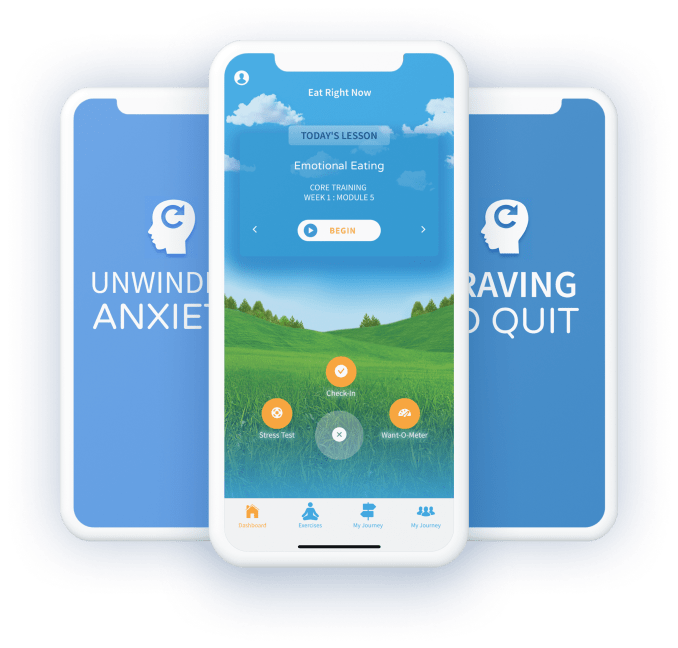The word habit often has a negative connotation because people tend to associate the word with negative behaviors. The word in and of itself isn’t a good or bad thing. It relates to a brain process that can produce positive or negative results, depending on the outcomes.
What Is a Habit?
A habit is simply a behavior that has become automatic. You do it without thinking about it. Sometimes, you set about to create a habit, but frequently they develop without you even knowing it. You get through every day by utilizing countless habits, many of which you might not be aware of.
Think about your day so far. Try to retrace your steps from the moment you became consciously aware this morning. How many of the behaviors did you engage in did you have to think about, and how many were automatic? You may be in the habit of eating a Poptart every morning, fastening your seatbelt when you get in the car, or going to the gym three days a week after work. All of these behaviors can be deeply ingrained in your brain’s neurological wiring, which means that even though they aren’t natural responses, people often have a difficult time changing them.
How Are Habits Formed?
Habits allow people to move through modern-day life efficiently, but habit formation is rooted in ancient evolutionary mechanisms in the brain. This ancient section of the brain is responsible for basic survival instincts and learning processes. When humans were first wandering around on this earth, they were primarily concerned about one thing: survival. To live, they had to find food and avoid danger.
Their brains worked for them. When they were hungry, they’d see something that looked appealing, so they’d eat it. If it gave them energy and made their stomachs feel better, they stored the memory away of what the source was and where it was located so they could return to it the next time their stomachs growled. If it made them feel sick, they also stored the memory away and learned not to eat it again. Through repeating the behavior, it becomes ingrained to such an extent that early humans didn’t have to think about which foods were good to eat and which ones they needed to avoid.
The Habit Loop
Humans evolved the ability to be creative problem-solvers. People still use this old brain in modern times, but they often add another creative element to it. This newer component of the brain can work in conjunction with the older part of the brain to create habits around behaviors that may seem unrelated.
For instance, you may feel stressed out after a long day of work, and you want something to ease the discomfort stress causes, so you wander into the kitchen and grab a pint of ice cream or a glass of wine. The ice cream tastes delicious, or the wine makes you feel relaxed. You feel better. The next time you feel stressed, you think, “Hey, the last time I felt this way, that ice cream made me feel better!” So, you grab another pint. Before long, you don’t even think about it. Every time you feel stress, you cope with it by downing your preferred feel-good food or beverage. This relationship between stress, food and reward is called a habit loop.
What Is the Difference Between Bad Habits and Good Habits?
When a habit is formed, the brain doesn’t have to work hard. You move into autopilot. You learn to connect the trigger, behavior and reward, but you don’t necessarily make the connection with long-term consequences. You may learn that smoking a cigarette alleviates your feeling of stress, so you continue to do it until it becomes an automatic response.
When you reach for that cigarette, you aren’t thinking about the negative long-term consequences. Unfortunately, once you get into the habit, it’s difficult to break it, even when you know that smoking is the leading cause of death in the U.S., accounting for one out of every five deaths annually. Simply put, a bad habit has negative physical, emotional or psychological consequences, while a good habit has positive ones.
How Do You Break a Bad Habit?
If you want to break a bad habit, you need to rewire your brain. You can utilize your brain’s rewards system to change your response to stimuli from behaviors that have negative consequences to those that have good ones. There are three steps that you can take that are effective in breaking a bad habit:
- Become aware of your triggers, behaviors and rewards: Take some time to step away from yourself and think about your habit loop. What are the triggers that cause you to engage in the habit? There may be more than one trigger, so see if you can uncover all of them. Take note of how you feel and what your environment is. Do you want to smoke whenever you’re around the in-laws? If your answer is yes, then your trigger is probably both emotional and environmental.
- Examine the rewards: Instead of trying to overcome your habit by sheer force of will (this is rarely successful), utilize awareness to understand how engaging in the behavior truly makes you feel. Notice the physical sensations you get from the action. Does engaging in the behavior cause you to feel worse (say, from guilt or feeling unpleasantly full or hungover)? Is it as rewarding as you thought, or do you end up feeling poor again shortly after you complete the behavior?
- Find a New Reward: Use your sense of curiosity to explore rewards that have a positive outcome. Convert your bad habits into good habits by finding rewards that have a better payoff.
You can circumvent your brain’s habit loops and create new, healthy, positive habits. Dr. Jud’s app-based behavior change programs provide the tools and support you need to help you navigate change. If you have any questions about any of these programs, please reach out to us, and we’ll be happy to help.
Sources:
https://www.cdc.gov/tobacco/data_statistics/fact_sheets/adult_data/cig_smoking/index.htm



